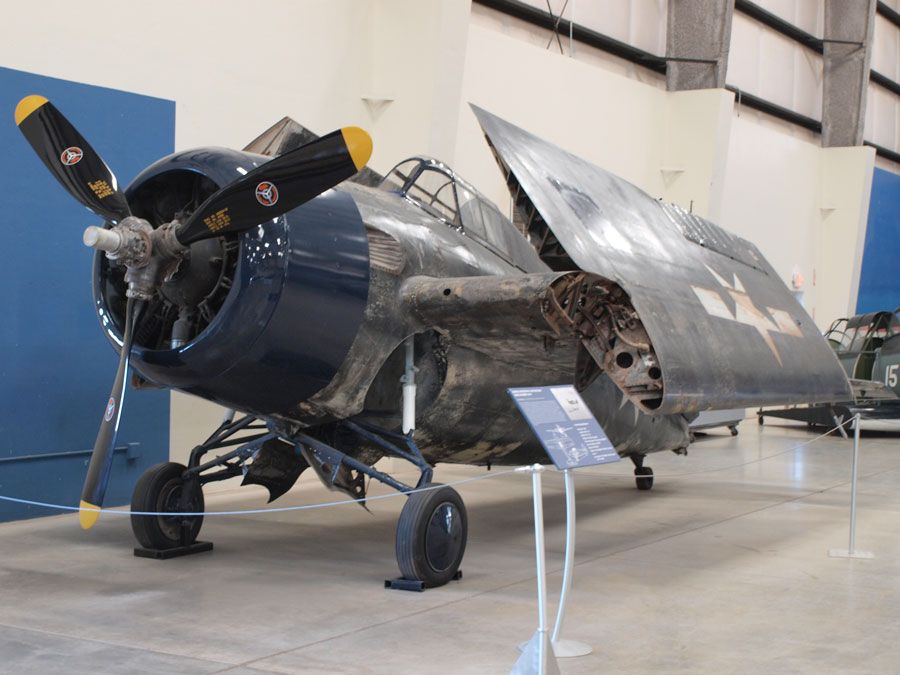General Motors (Grumman) FM-2 (F4F) Wildcat

The FM-2 is a late World War II variant of the famous Grumman F4F Wildcat built by General Motors’ Eastern Aircraft Division. Changes to the aircraft included a larger engine and a taller vertical tail. General Motors began building Wildcats when Grumman’s factories were dedicated to the production of F6F Hellcats. The Wildcat first flew in 1937 and entered Navy service with VF-41 in 1940. F4Fs were the primary carrier and land-based fighter for the Navy and Marines for the first two years of the war. It was also supplied in large numbers to the British Royal Navy, which called it the Martlet. In 1943, the greatly improved F6F Hellcat began to replace the Wildcat on the Navy’s large carriers, while the Vought F4U Corsair replaced it in land-based Marine squadrons. The smaller Wildcat remained the primary fighter for the American and British escort carriers. Many Wildcats also served as trainers throughout the war. One of the Navy’s largest training centers was located near Chicago. In order to have a carrier to practice takeoffs and landings two Great Lakes paddlewheel steamers were converted into aircraft carriers. The USS Wolverine and USS Sable sailed from Chicago’s Navy Pier each day to let new aviators practice landing and taking off from ships. The combination of new pilots and the inherently dangerous activity of landing on a moving ship resulted in many aircraft littered across the bottom of southern Lake Michigan. Fortunately for future historians Lake Michigan has just the right combination of depth, cold and fresh water to help preserve these aircraft.
Wingspan | 38 ft |
Length | 28 ft 11 in. |
Height | 9 ft 11 in. |
Weight | 8,271 pounds (loaded) |
Maximum Speed | 332 MPH |
Service Ceiling | 34,700 ft |
Range | 900 miles |
Engine | One Wright R-1820-56 radial with 1350 horsepower |
Crew | 1 |
Manufacturer
General Motors
Markings
Carrier Qualification Training Unit, Glenview, Illinois, 1945
Designation
FM-2
Serial Number
16161